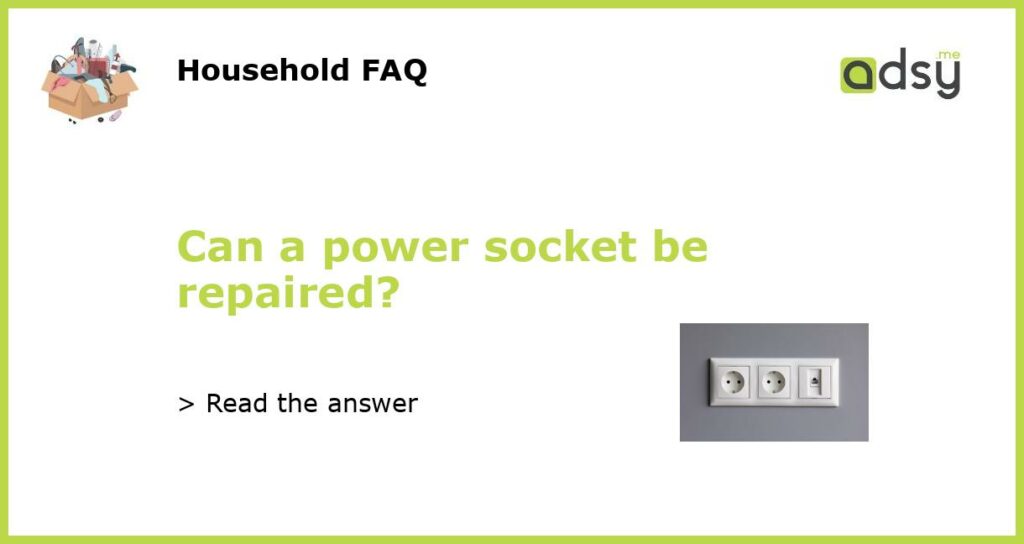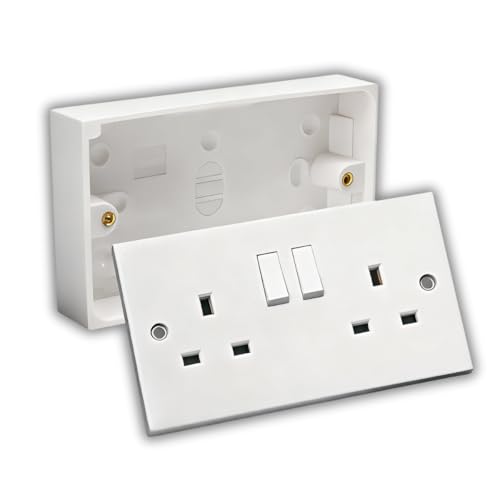Yes, a power socket can be repaired
A power socket is an essential component of our modern lives, used daily to power our electronic devices and appliances. However, like any other electrical component, power sockets can become faulty or damaged over time. Fortunately, in most cases, a power socket can be repaired instead of having to be replaced entirely. In this article, we will explore the common issues that can occur with power sockets and the steps you can take to repair them.
Common issues with power sockets
There are several common issues that can affect power sockets, including:
- Loose connections
- Burnt terminals
- Short circuits
- Overheating
- Physical damage
These issues can arise due to various reasons, such as wear and tear, faulty wiring, or improper installation. Identifying the specific issue is crucial in determining the appropriate repair method.
Steps to repair a power socket
Before attempting any repairs on a power socket, it is important to ensure your safety. Turn off the power supply to the socket from the circuit breaker. Once you have taken this precautionary step, you can proceed with the following repair steps:
1. Tighten loose connections
A common issue with power sockets is loose connections, which can lead to intermittent power supply or no power at all. Start by removing the socket cover plate to access the wiring. Carefully tighten any loose wires or screws and ensure all connections are secure. Remember to turn the power supply back on after completing this step to test the socket.
2. Replace burnt terminals
If you notice burnt or blackened terminals on the socket, this is an indication of damage that requires immediate attention. To repair this issue, you will need to replace the socket entirely. Make sure to purchase a suitable replacement socket that matches the wiring specifications. Follow the manufacturer’s instructions to safely install the new socket.
3. Troubleshoot short circuits
If your power socket frequently trips the circuit breaker or causes the safety switch to activate, it may be experiencing a short circuit. Start by unplugging all devices from the socket and then reset the circuit breaker. Gradually plug in each device one by one to identify the one causing the short circuit. In some cases, the culprit may be a faulty device, which will need replacement or repair. If the short circuit persists, it is recommended to seek professional help to diagnose and fix the issue.
4. Address overheating
An overheating power socket is a dangerous situation that can lead to electrical fires. If you notice excessive heat emanating from your socket, it is crucial to address the issue promptly. Overheating can be caused by factors such as overloaded circuits or faulty wiring. In such cases, it is advisable to seek the assistance of a licensed electrician to diagnose and repair the problem.
5. Repair physical damage
Physical damage to a power socket, such as cracks or breaks, can compromise its functionality and pose a safety hazard. If you notice any physical damage, it is best to replace the socket entirely. Attempting to repair damaged sockets without professional expertise can lead to further damage and potential electrical hazards.
When to seek professional help
While some power socket repairs can be conducted by an informed individual, it is essential to know when to seek professional help. If you are unsure about your skills or if the issue persists even after attempting basic repairs, it is advisable to contact a licensed electrician. They have the necessary expertise and tools to diagnose and repair complex electrical issues safely.
In conclusion, a power socket can indeed be repaired in many cases, saving you the cost and hassle of replacing the entire unit. By understanding common issues and following the appropriate repair steps, you can restore a faulty power socket to its proper functioning. Remember to prioritize safety when working with electrical components and seek professional assistance when needed.






